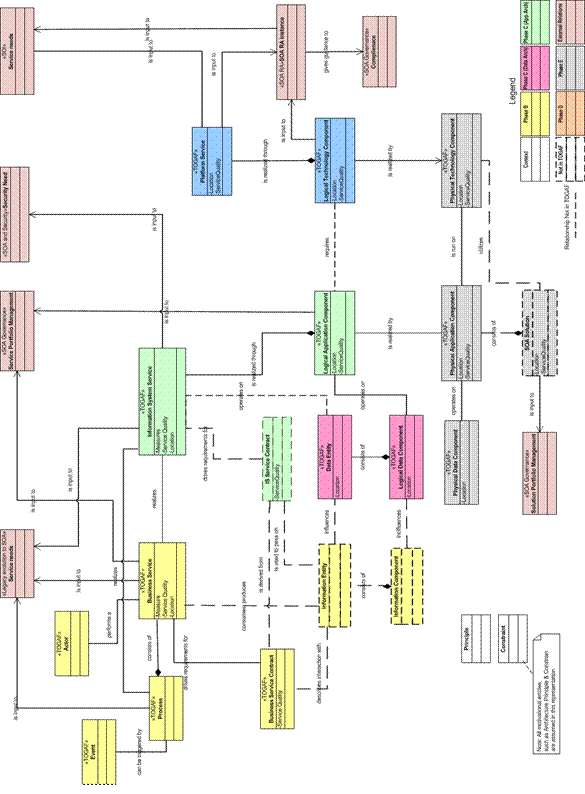Using TOGAF to Define and Govern Service-Oriented Architectures – Summary
In summary, there are a number of SOA methods, tools, and reference materials available to help the enterprise architect develop Service Oriented Architecture (SOA). The Open Group standards and publications are suggested. Some are directly focused on SOA, such as the SOA Source Book, OSIMM, or the SOA Governance Vitality Method (SGVM); others are not directly focused but regularly useful, such as outputs of the Security Forum and the Jericho Forum in areas of security.
Using TOGAF to create SOA requires adapting TOGAF to address the requirements of a particular style. Addressing a style will require identification of:
- Key meta-model entities
- Extensions to the content meta-model
- Key artifacts
- Style-specific reference materials and maturity models
The adaption of an architecture capability to support SOA requires considerable activity in the Preliminary Phase of TOGAF. These activities and SOA specific Open Group SOA Working Group tools include:
- Adapting the principle of service-orientation
- Determining organization readiness for SOA (OSIMM)
- Governance: The Open Group SOA Governance Model and Vitality Method
- Partitions: utilize a specialist Center of Excellence (CoE) to support SOA
In the rest of the TOGAF ADM phases what changes is how an architecture is described, analyzed, and documented. During an iteration of the ADM the practitioner needs to consider the key meta-model entities identified above, and the artifacts identified above.
At different levels of granularity the purpose of the ADM cycle will vary. In strategic-level work the purpose is identifying whether SOA is needed, and in which segments. In segment-level work describing the structure and capability requirements of SOA takes place. Finally, in the capability-level work, the purpose is to identify and describe the requirements of the SOA services that will be available.
When delivering SOA with TOGAF, the practitioner should never lose sight of the final objective: SOA solutions that address managing the enterprise's complexity and provide business agility.
The figure below is a summary view of the UML-like representation of the SOA-TOGAF meta-model. It is presented for the architect who can readily interpret standards-based models. This UML-like representation only shows the entities and relationships necessary for SOA. Where the SOA fits within a broader architecture, the TOGAF meta-model includes additional entities and relationships. This model highlights the SOA-specific meta-model entities and their key relationships.
